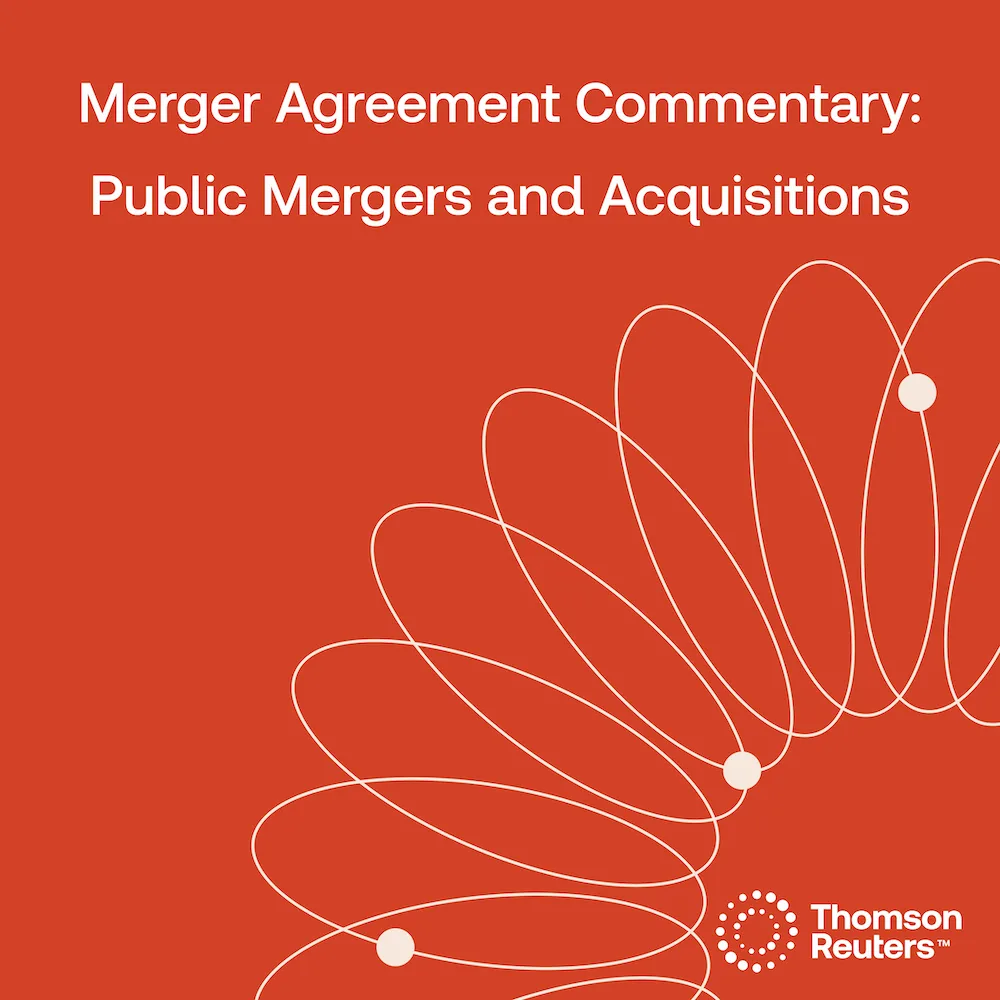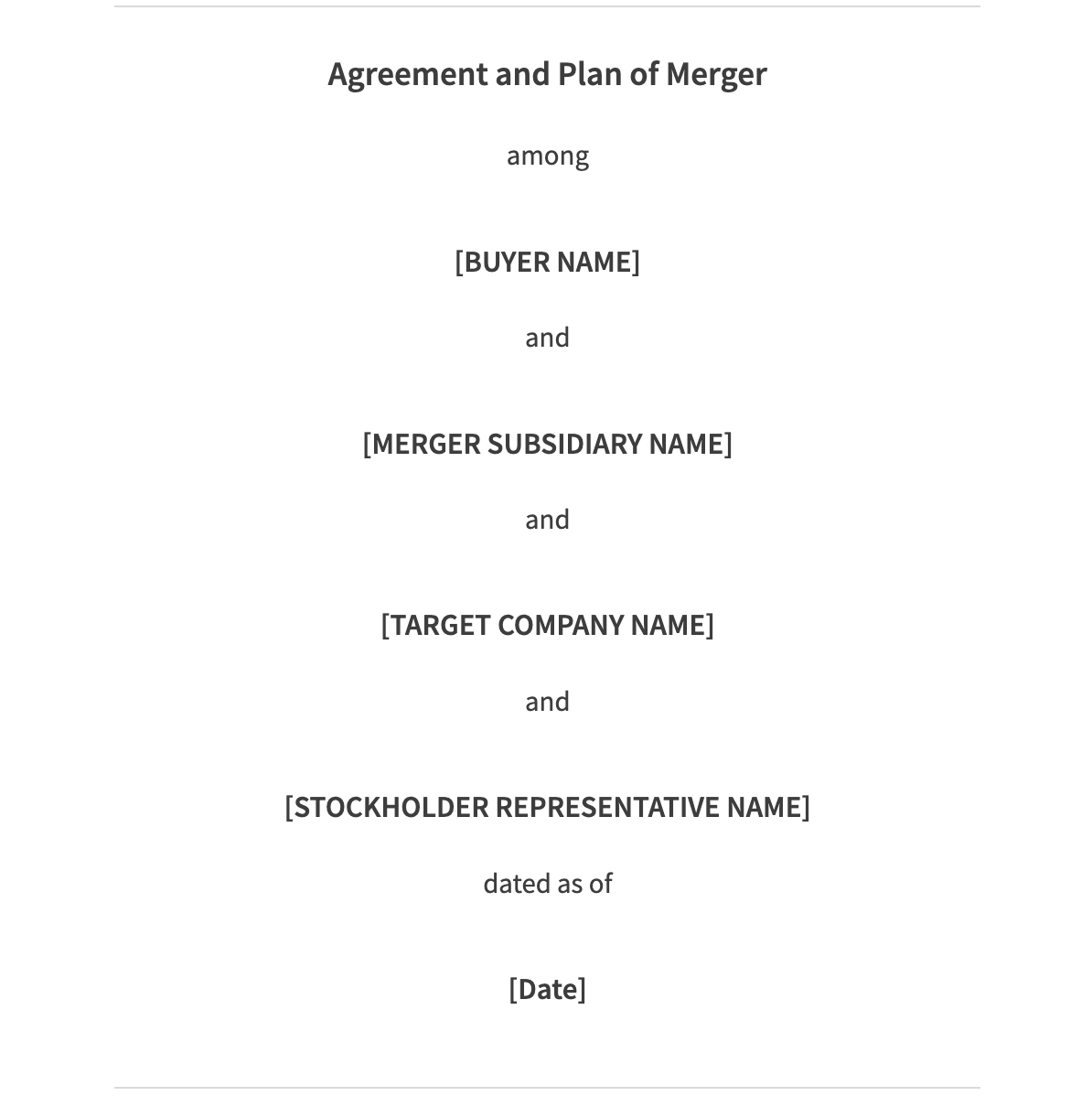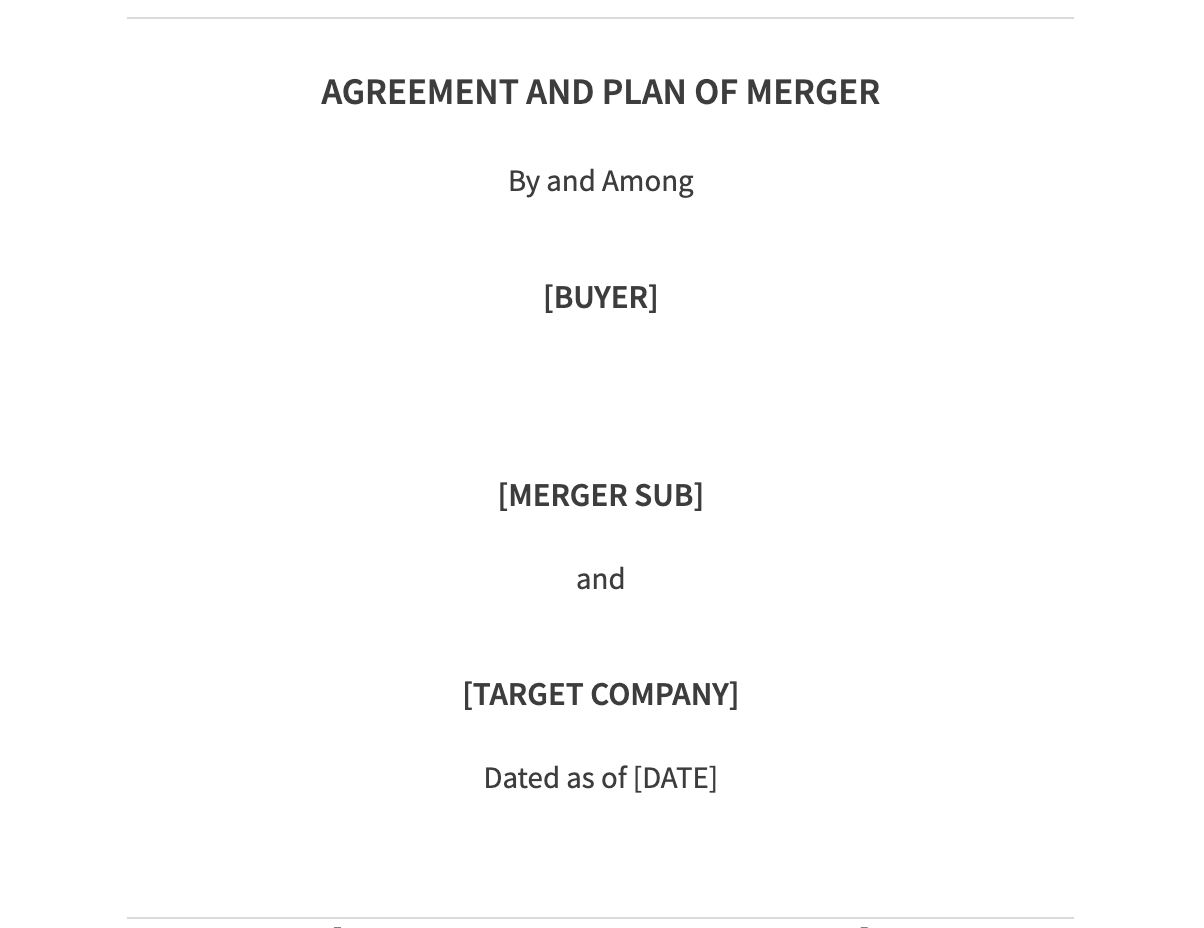Definition, key components to a merger, case example, and resources for lawyers
diligence · due diligence · purchase agreement · merger agreement
Highlights:
|
Globalization contributes to helping businesses adapt to and thrive in a rapidly changing economy. In recent years, we have observed that companies around the world are acquiring and merging to expand their market reach and achieve economies of scale.
Over 325,000 mergers and acquisitions transactions have been announced since 1985, with a total value of nearly USD 34.9 trillion. For better mergers comes the vital role of the legal document known as a merger agreement. These play a pivotal role in ensuring a structured and legally sound framework that helps prevent disputes and ensure a smooth transition during the legal due diligence and merger process.
Jump to ↓
| What is a merger and merger agreement? |
| Key components |
| Why is the merger agreement important? |
| Case example |
Sample templates and research resources

Practical Law Practice Note
Commentary on the key terms and conditions commonly found in merger agreements
Access with free trial ↗What is a merger and merger agreement?
A merger is when two or more companies combine to form a single entity. This usually happens when one company absorbs the other or when both companies come together to create a new company and form a single entity.
A merger agreement is a legal document that outlines the terms and conditions of the merger, detailing how the companies will combine and manage the assets and liabilities between them. It also determines what each company’s shareholders will receive. The agreement is made with the intent to ensure that both the parties understand their liabilities and rights by providing a clear plan for how the merger will be executed and, in case of dispute, what will be the resolution to it.
What are the key components of a merger agreement?
Parties involved
One of the most critical aspects of any agreement is the parties involved, so it is important to identify the companies merging. The company that will take over the other company is known as the acquiring company, whereas the company being absorbed is known as the target company.
In some cases, if the companies are of equal size and importance, they may not specify one as the acquirer, and instead, they come together as equals.
Merger structure
There are different ways to structure a merger.
- Merger — Where the target company is absorbed by the acquiring company and it will then no longer exist as a separate entity.
- Consolidation — Where both companies combine to form an entirely new company.
- Share purchase — Where one company buys the shares of the other company. This approach can have different legal and tax consequences than traditional mergers.
Terms and consideration
This part of the merger agreement explains what the shareholders of the company being bought will get in return for their shares and the conditions that need to be met.
Representations and warranties
The true state of the business is presented in this section of the agreement. They will confirm that their financial statements are accurate, have followed all laws, and have disclosed any significant liabilities or contracts.
These promises help build trust between the companies. If one company discovers later that the other has not been truthful, it could lead to legal problems.
Covenants
Covenants are promises the companies make about how they will run their businesses from the time they sign the merger agreement until the merger is completed. This might include agreeing to continue business as usual, not making any significant changes, and working to get all necessary approvals for the merger.
Closing conditions
These are the conditions that must be met before the merger can be finalized. Common conditions include getting approval from the shareholders of both companies, receiving approval from government regulators, and ensuring that there have been no major changes to either company’s business.
Termination provisions
The termination provisions are significant as they explain the circumstances where the merger can be canceled before completion. There might also be a termination fee, a penalty paid by the company that backs out of the agreement.
Regulatory approvals
The Federal Trade Commission in the United States or the Department of Justice (DOJ) requires approval for merger. Their role is to ensure that there is no creation of a monopoly or reduction of competition in the market.
Indemnification
Indemnification provisions protect one company from certain losses if the other company doesn’t live up to its promises in the agreement. For example, if the target company’s financial statements turn out to be inaccurate, the acquiring company might seek compensation for any resulting losses.
Governing law
The merger agreement will specify which state’s laws will be used to interpret the agreement. This is important because different states have different mergers and corporate governance laws.
Why is the merger agreement important?
The merger agreement is crucial because it provides a clear plan for the merger. It helps prevent misunderstandings and disputes by clearly stating what each company expects and what they are responsible for. The merger agreement is important because it:
- Defines terms — It explains how the merger will work, including the value of the companies and how shares will be exchanged.
- Protects interests — It sets out legal responsibilities and protections for both companies to avoid arguments.
- Clarifies roles — It explains as to what each company will do during the merger.
- Sets conditions — It lists what needs to be done before the merger, like getting approval from regulators.
- Addresses risks — It identifies possible problems and provides resolutions for handling them.
Case example
A key case that shows the importance of a merger agreement is Revlon, Inc. v. MacAndrews & Forbes Holdings, Inc. (1986).
In this case, Revlon, a cosmetics company, was subjected to a hostile takeover wherein the Delaware Supreme Court ruled that it is of pivotal importance that when a company decides to sell or merge, the board’s duty is to focus on getting the best price for the shareholders. This case highlighted that it is vital to have a clear and effective merger agreement to protect everyone’s interests, especially the shareholders.
Last thoughts and research resources
A well-prepared merger agreement ensures both companies understand the deal, protects their interests, and sets up rules for handling problems. By clearly outlining how the merger will work, who is responsible for what, and what needs to be done, the agreement prevents confusion and helps the merger go smoothly. It also helps get the required approvals and avoids future issues.
To ensure everything is done correctly and fairly, it’s essential to have a lawyer draft a detailed merger agreement.
Templates for merger agreements
Looking for templates such as standard documents for merger agreements? The Standard Document below assumes, among other things, that the merger is structured as a reverse triangular merger and the target company and merger subsidiary are Delaware corporations. It also assumes that the signing and closing of the transaction are not simultaneous. This Standard Document has integrated notes with important explanations and drafting and negotiating tips.

Practical Law Standard Document
Merger Agreement (Private Company, Pro-Buyer)
Access with free trial ↗What about a long form agreement for the all-cash, one-step merger acquisition of a US public corporation drafted in favor of the buyer? The Standard Document below also contains integrated notes with important explanations and drafting and negotiating tips.
Practice notes and commentary
The practice notes below provide, for example, commentaries on the key terms and conditions commonly found in merger agreements. In other practice notes, you’ll find common financing provisions in merger agreements; how they can address the risk of financing failure, and the interrelation between the financing commitment letter and the merger agreement.
Use the resources below to start exploring related topics with terms you might have missed.
- Merger Agreement Commentary: Public Mergers and Acquisitions
- Merger Agreement Commentary: Private Company
- Confidentiality Agreements: Mergers and Acquisitions
- Drafting and Negotiating Financing Provisions in Mergers
- Intellectual Property: Stock Purchases and Mergers
- Antitrust Considerations in Merger Agreement Non-Compete Clauses
- Drafting and Negotiating Financing Provisions in Mergers
- Proxy Statements: Public Mergers
- What’s Market: Public M&A Bidding Wars
Legal updates for mergers
- All related legal updates (International)
- All related legal updates (US National/Federal)
- All related legal updates (Canada)
- All related legal updates (United Kingdom)

AI news and insights
Industry-leading insights, updates, and all things AI in the legal profession
Join community ↗







